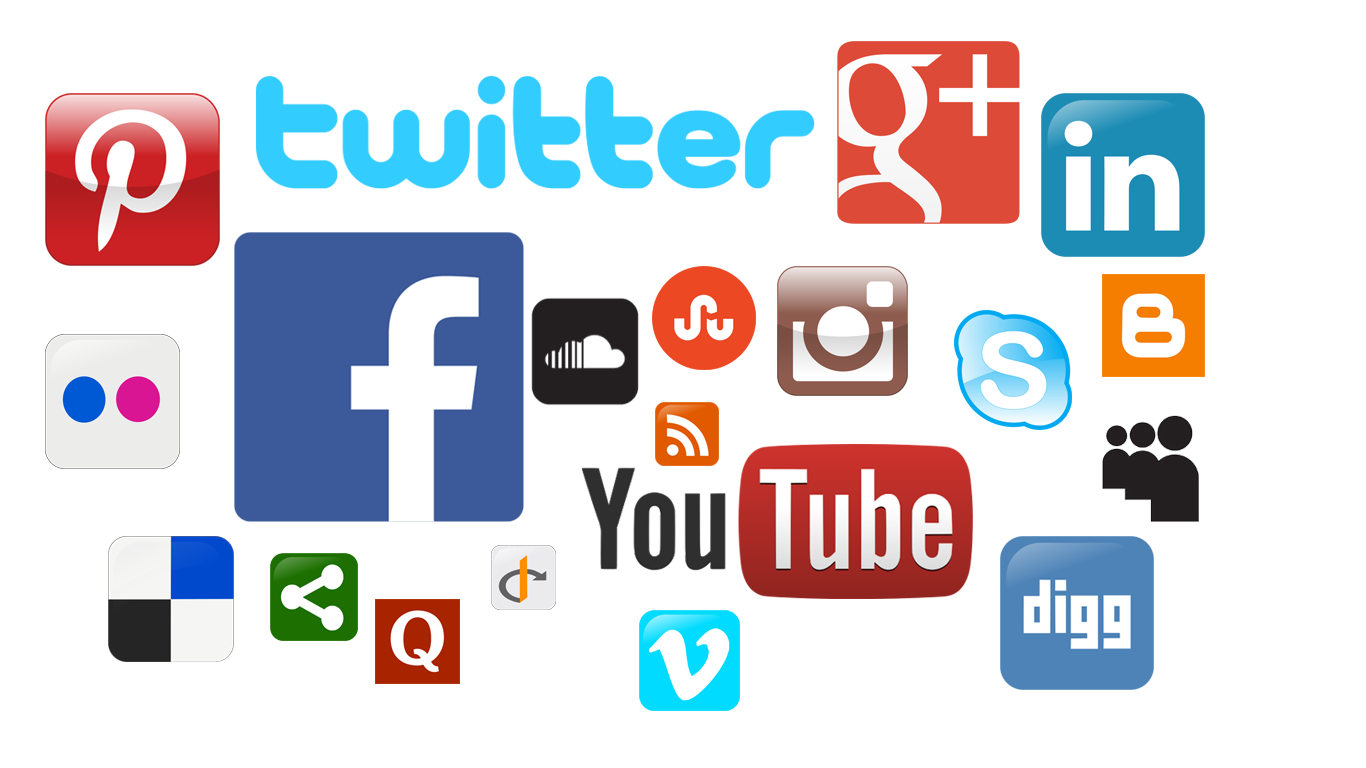What is the Internet and how do we Get Around?
 |
| https://upload.wikimedia.org/wikipedia/commons/d/d2/Internet_map_1024.jpg |
According to the Internet Society, the internet was developed int the early 1960's. It is essentially a network of networks. Billions of personal computers and servers connected to each other via a similar infrastructure. These devices host and share data to one another. Every web page is a series of files, written text. We navigate the internet using a web browser. Web browsers are capable of translating HTML or Hyper Text Markup Language into the graphical interfaces displayed on our screens. They display the text, pictures, and links. Common web browsers include, Firefox, Chrome, Internet Explorer, Edge, and Opera.
Methods Of Communication
Social Media
 |
| https://upload.wikimedia.org/wikipedia/commons/b/bf/Socialmedia-pm.png |
Social media is a modern phenomenon of constant connection. Techtarget describes it as an online social collaboration. Social media allows users to connect and communicate with each other on various platforms using several different types of content sharing. One popular Example is www.Facebook.com Facebook allows its users to share text, graphics and videos all organized by date. They also utilize groups so that people with similar interests can find and communicate with each other.
 |
| https://www.flickr.com/photos/rahulrodriguez/9026700946 |
Email is a popular and widely adopted communication type. An email is like a digital letter. One person sends the digital letter and the intended party receives it. Email is sent through networks, both internal and external to groups and individuals. An email can exchange text, attachments and images. As early as 1996, e-mail was more popular than traditional postal services.
Wikis and Blogs
 |
| https://upload.wikimedia.org/wikipedia/commons/b/b3/TRABAJO_COLABORATIVO.jpg |
 |
| https://pixabay.com/static/uploads/photo/2015/11/06/13/25/blog-1027861_960_720.jpg |
Wikis and blogs are information depositories on the web. Typically a Wiki is compiled by multiple users. A blog, on the other hand, typically only has one author. Wikis are like simple online databases. Blogs, also known as weblogs, are like online journals.
Podcasts and Webcasts
 |
| https://www.flickr.com/photos/abletoven/3223086466 |
Podcasts and Webcasts are both forms of streaming media. Podcasts can be either audio or video podcasts. They are essentially your own audio journal or video journal on the internet. Users can typically subscribe and follow all of your content. A Webcast is a digital presentation of content, an online seminar or class, a live streaming of sound or video.
Streaming Media
 |
| https://upload.wikimedia.org/wikipedia/commons/c/c0/Glide_Streaming_and_Storage.jpeg |
The delivery of media content has drastically changed over the past several years, before the television was the primary deliverer of video content. For Music media, radios, stereos, cd players and mp3 players were the stalwarts. Today we receive content much differently. There are both free and subscription model streaming services. A small portion of the content is downloaded, and then play is begun while the remainder downloads. Creating a culture of instant satisfaction and easy access to most forms of media.
Commerce
E-commerce
 |
| https://upload.wikimedia.org/wikipedia/commons/c/c5/Ecommerce_sales.jpg |
Another area of our lives that has been drastically changed by the internet is e-commerce. E-commerce is any type of financial transaction that takes place over the internet. Retailers have mostly moved to a strong online presence. You log on, select your items, checkout, and then the items are shipped to your doorstep. You can even purchase your groceries online in some areas. Online auction sites have been created where users interact and sell to each other on a global scale. Classified ads have even moved online and users run business based off of services or products sold.
M-commerce
 |
| https://pixabay.com/static/uploads/photo/2015/10/27/11/48/mobile-phone-1008835_960_720.jpg |
M-commerce or mobile commerce is based around mobile devices or smart phones. Smart phones are now equipped with applications that can interact with internet stores as well as having chips capable of interacting with brick and mortar stores as well. AndroidPay and Apple pay are both examples of this service. Purchase directly related to mobile devices including apps, games, and digital content can all be made with accounts tied to your mobile phone.
Reference: http://www.internetsociety.org/internet/what-internet/history-internet/brief-history-internet
Reference: http://www.facebook.com
Regerence: http://www.computerhope.com/jargon/e/email